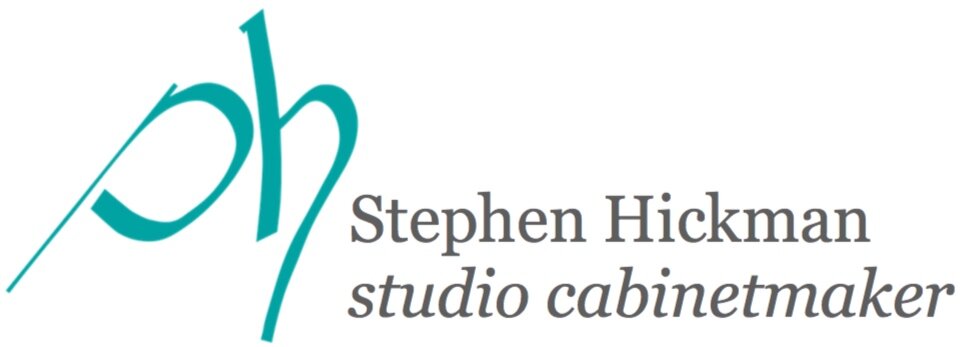The 5% that kills you
This is how I checked the chamfers - holding it side-on to a desk lamp to see the shadows.
David has been speaking in the Dimblebies this week on his life as a furniture maker, and one of the phrases he mentioned was "the extra 5% that kills you". The premise is this: we can go to 95% fairly easily, and produce a good, well-finished piece of work. But it is that additional 5% that takes the piece to exceptional; it is this additional 5% that kills you.
Our project this week was a bread board. To flatten and joint three pieces of wood, re-flatten and cut out a perfect octagon. This is the sort of little project that teaches so much. We had to set up the planes to take the finest shavings, given that the ash we worked in was so prone to tear-out. Correctly edge-jointing the boards is another skill. The edges need to be perfectly flat and square, and then planed just a fraction of a millimetre concave to get a perfect sprung joint - this project helps to prepare us for making larger surfaces such as tables. The final flattening had to be within the school tolerance: no more than 0.25mm difference between the board's thickest point and its thinnest. Each side of the octagon had to be equal length with a given tolerance of 1mm. This was an accurate piece. This was the 95%.
The 5% was the chamfers. A 1-in-7 chamfer was to be put on each side using a block plane, running in lines perfectly parallel to the edge, and meeting point to point with a crisp line. To get these on roughly took me an hour or so at the end of Thursday. To perfect them took me all day Friday.
All day, to perfect 8 chamfers, which were almost correct at the start of the day. But almost is not quite there. It is 95% there. This is not productivity in the way that most of us are used to. It is getting into the habit of chasing that extra 5%.
-sh
A block plane is a wonderful little plane. They fit in one hand and are used primarily for trimming end grain, but can be set up to use in other ways. Darren (our course leader) told me that I might use a block plane to take a very fine final shaving all over a piece of work, as an alternative finish to using coarse sand paper. This can give a crisper finish, and not gum up the grain with dust from the sanding process.

